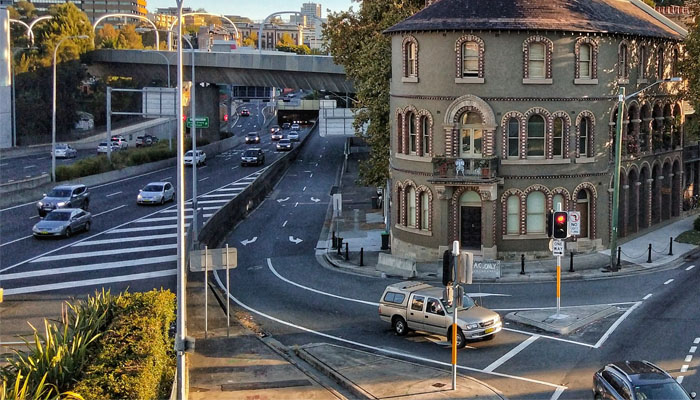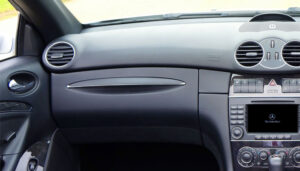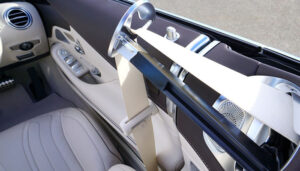In Australia, there are stringent rules and regulation for importing vehicles. Every automobile that enters the country must possess an Import Approval Permit. This can be acquired from the Department of Transport. So, before you even arrange shipment for your vehicle into Australia, it is best to contact the country’s customs department first. This way, they can assess your case and guide you through the steps you have to take and the fees you need to settle.
In this article, we are going to discuss some of the essential requirements you need to learn when planning to import a vehicle to Australia. So, before you join a used cars online auction, make sure you check it this article first. We will discuss the details you need to know, especially when you are shipping a pre-owned vehicle into the country.
Certain Restrictions in Importing Cars Newer than 30 Years Old
You may be planning to import a vehicle manufactured on from 1989 onwards. If the same model/configuration has been sold new in Australia, you are not allowed to import it. However, if you are an Australian citizen or a permanent resident and you are returning home after residing overseas for more than a year, you will be allowed to ship your car into the country.
Importing Used Cars Older Than 30 Years Old
You will find plenty of vehicles in good condition when you go through a used cars online auction. Since the Japanese people take care of their possessions religiously, it is not uncommon to find units that are still functioning properly even if they are decades old. If you are planning to import a vehicle older than 30 years old, you have to settle the vehicle taxes, duties, and fees for Australia. These charges will be determined according to the assessed value of the car once it arrives in the country.
Aside from that, the vehicle must be certified for compliance. It is worth noting that there are several conditions that the car must meet. The vehicle must pass the requirements for seat belts, mirrors, and safety inspection, among others. Moreover, there are cars that need an import compliance plate and an engineer certificate.
Securing a Letter of Compliance
You must get a Letter of Compliance from an Identification Plate Approval agency. This document states that your vehicle complied with the Australian Design Rules (ADRs). You should also know that even if your car was issued a Certificate of Conformity by the manufacturer or a motor vehicle dealer, it will not suffice as a Letter of Compliance.
Compliance Guidelines for Units Imported Under the Specialist and Enthusiast Vehicle Scheme (SEVS)
The SEVS covers vehicles built for regular road use and were released from 1989 onwards. To be eligible for importation under this scheme, the car must meet two out of these criteria:
- Special design features
- Unusual appearance
- Performance
- A vehicle featured in specialist automobile publications
It is worth noting that vehicles must be modified to comply with Australian Design Rules (ADRs) by a Registered Automotive Workshop. The requirements for compliance depend on the type and age of the vehicle. Moreover, they include certain factors including noise and emissions testing, child restraint points, and new tires, among others.
Keep in mind that not all SEVS-eligible models can be given a compliance certificate. Otherwise, they will not be eligible for registration and for use on the road. Registered Automotive Workshops invest a significant amount of money and time to add each model to their compliance schedule. It is also worth noting that the SEVS is designed to limit the cars entering the country. So, every workshop can only comply a limited number of vehicles per year.
Compliance is made available if there are enough vehicles to cover and the consumer demand is high. For instance, older or rare vehicles are technically eligible for import. However, since there are so few of them, it may not be financially viable to set up compliance for them.
After finding a suitable vehicle from our used cars online auction, the RAW will get an Import Approval using the Vehicle Identification Number (VIN). In general, the government processes this and delivers it via email within one to two weeks. Keep in mind that you need an Import Approval certificate in order to have the unit cleared in the customs department in Australia. Basically, if you do not have an approved compliance workshop, you would not get an Import Approval. Consequently, you would not be able to get your imported vehicle.
Getting your Imported Vehicle Plated
If your car has been imported under the Letter of Compliance option, you are required to fit a plate to it. Otherwise, you will not be able to register it for road use. It is worth noting that one of the factors you have to consider when importing a car is the vehicle registration. This process is handled by State and Territory registering bodies. So, you must consult the governing body in the Territory or State where you intend to register your car.
Keep in mind that there is no guarantee that your vehicle will be registered for road use. For instance, only right-hand-drive cars are permitted to suit Australia road conditions. To get your registration plate, you need to download and print the Endorsement of Compliance Certificate from the Department of Infrastructure’s website. After that, you must schedule an inspection with a registered authority. They will then endorse the inspection form.
How to Apply for a Vehicle Import Approval Under a Letter of Compliance
If you’re are using a Letter of Compliance to apply for a Vehicle Import Approval, you must provide the Department of Infrastructure with the following:
- Documents illustrating your proof of ownership (purchase invoice/receipt, registration documents, and statement)
- The Letter of Compliance
If you want to learn more about the compliance requirements for importing cars to Australia, feel free to contact Carused.jp today. Our friendly sales representatives will be more than happy to answer your questions and guide you through the process.



